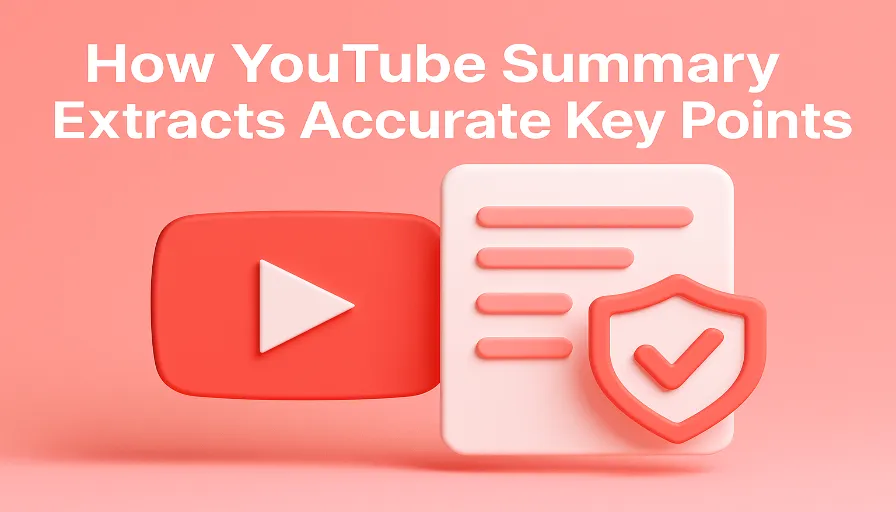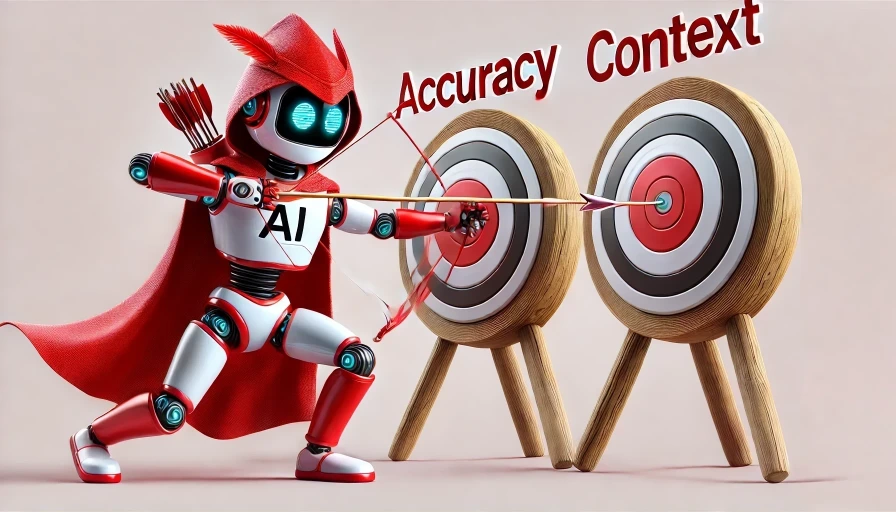
How YouTube Summary Extracts Accurate Key Points
TL;DR: We fetch the transcript, classify the video format from the first ~1,000 words, then apply a category-specific prompt to extract verifiable key points and methods.
Why accuracy is hard — and how we address it
Most “AI summaries” miss what viewers actually want: the structure specific to the format. A product review needs specs and verdicts, while an interview needs diarized quotes. We treat these differently, which is why our key points read like they were pulled by someone who knows the genre.
The backend flow
-
Transcript retrieval
- We fetch available captions or the transcript exposed by the platform, commonly via tooling like yt-dlp.
- If there is no caption track, we surface that rather than silently guessing from audio.
-
Early classification
- We scan roughly the first 1,000 words to detect video type and signals like Q&A patterns, spec lists, news framing, or tutorial steps.
- This determines the downstream prompt and output schema.
-
Category-specific prompting
- Each category has its own extraction rules so the output matches user intent for that format.
Categories and what we extract
-
Entertainment
- Plot beats, notable moments, standout lines, reception if discussed.
-
Educational
- Definitions, core concepts, ordered steps, common pitfalls, and a short study-ready recap.
-
Lifestyle
- Actionable tips, routines, ingredients or tools, and constraints mentioned by the creator.
-
Technology
- Features, architecture or components, performance notes, and version or compatibility constraints.
-
Gaming
- Mechanics, meta insights, patch changes, builds, and difficulty tips.
-
News and Commentary
- Who/what/when, sources cited, claims vs speculation, and likely implications.
-
Art and Creativity
- Process breakdown, materials and techniques, inspiration sources.
-
Science and Nature
- Hypotheses, methods, results, limitations, and references if provided.
-
Business and Finance
- Metrics, strategy, market context, risks, and numbers you can verify in-video.
-
Wellness and Self-Improvement
- Evidence-backed guidance vs anecdotes, step-by-step routines, contraindications when mentioned.
Shorts follow a condensed path: one crisp takeaway or claim, plus any supporting detail if it exists in the transcript.
What “good” key points look like
-
Verifiable
- Preference for claims tied to a timestamp or explicit phrasing in the transcript.
-
Format-native
- Reviews separate “claims” from “observations.” Interviews capture speaker-attributed quotes. Tutorials keep steps ordered.
-
Minimal speculation
- If the transcript doesn’t say it, we don’t invent it. Visuals not described are flagged rather than guessed.
Practical example patterns
-
Educational
- “Return 5–7 core concepts with one-sentence definitions and a compact example per concept. Preserve hierarchy.”
-
Interviews
- “Extract verbatim quotes with nearest timestamps. Attribute only if the transcript provides names. Skip paraphrases.”
-
Reviews
- “List key specs, then test observations, then verdict. Separate ‘What it claims’ vs ‘What is observed’ if both appear.”
These patterns reduce vague generalities and produce cleaner, more scannable key points.
Why the first 1,000 words matter
That slice often includes setup, structure signals, and the presenter’s framing. Classifying early lets us switch to the right extraction schema before noise accumulates. It’s the single most reliable boost to accuracy we’ve found.
TL;DR Verdict
Classify the format first, then use a tailored prompt. That’s how you get key points that are concise, verifiable, and aligned with what viewers expect from that type of video.
References
- yt-dlp project: https://github.com/yt-dlp/yt-dlp
- YouTube Help — captions overview: https://support.google.com/youtube/answer/2734796
What’s next
We’re publishing a deep dive on product-review prompting and how we handle “claims vs observations,” along with timestamp guidance.
Author note
We tested generic prompts across thousands of videos. The biggest jump in perceived quality came from treating interviews, reviews, and tutorials as different species, not just “content.”
FAQ
-
How do you handle videos without captions? We don’t. We fetch the transcript, which is often available, but if not, we can’t summarize.
-
Do you support podcasts and long interviews? Yes. We prioritize diarized quotes and topic shifts, then compress into 4–6 key insights with timestamps.
-
Can you summarize Shorts? Yes! The summary is often very short, with a single crisp takeaway.
-
How do you reduce hallucinations? We extract directly from the transcript, prefer official captions, avoid visual-only speculation, and include coarse timestamps for verification.




